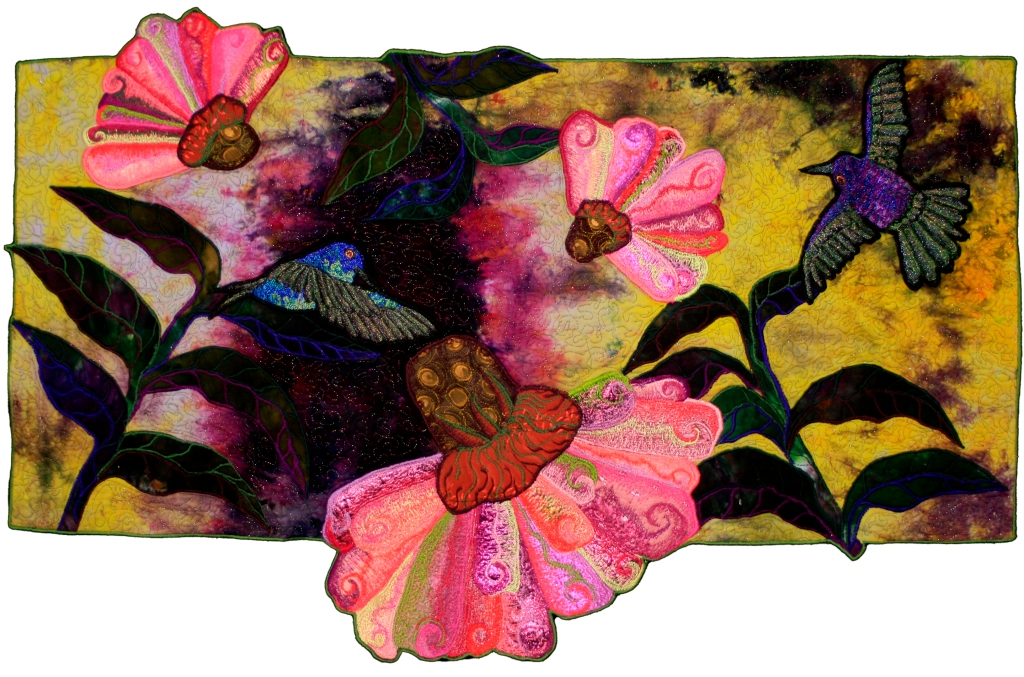
What can you do with your days, but work and hope. Let your work find your dreams through your play. What can you do with each moment of your life, but love till you love it away.
Bob Franke, Thanksgving Eve
It’s the end of the year. I don’t always pay much attention to that. Every day is a studio day, and everything else is pretty much second to that.
Three years ago, I thought I was done. I thought I wouldn’t go back to my art. I had lost so much and I didn’t see a way back.

Then three things happened. I sold a major quilt I never expected to sell. It was big, it was odd and although I loved it, I knew it wasn’t within the mainstream. But it sold.
I told Don, and he turned to me and said.” Do you want a studio?” “I have a room,” I said. “No. A studio. He gave me his old house as a studio. And because we’d sold the quilt, there was enough to make it into a studio.
That changed everything. Between that sale and a place to work, God, or the universe, or just two people told me that it was not over and I should go back to work. And that they believed in me. I have no words. Thank you is inadequate.
Art is about finding beauty, finding sense, finding ourselves. It’s about retelling our stories. Sometimes your life is your art. You pour yourself into what you’re making. Sometimes your art is about finding ways to make your life beautiful and more sensible. Functional. It isn’t that some of us are artists. That’s for all of us. It’s our birthright as human beings that we are many things: a drummer, a potter, a writer, a musicial, a mother, a gardener, and among all of those, an artist. As we live we switch through seasons of doing art and living our lives as an act of art. It really is genetically who we are. Our art defines us and redefines us, but essentially, it retells our stories until they make sense to us.
So here is the bulk of my work for this year:









In all, it’s a year when I made over 200 square feet of quilts. I had a show at the Cove Center in Havana, Il. And I showed off my work at Feed Mill Fabric and Quilts, and at the GAlesburg Art Center. And I could. Why?





Because of the support I got from you all. When you follow my process, share your own journey, purchase a quilt or fabric, let me show, you aren’t just interacting with me. You’re impacting what I can do in the future. You are making resources available that make my art possible. Again, thank you is inadequate


























Small Artifact Quilts
For that, in return, I try to give you back my art, my process, my knowledge, and my love. It’s small, but it’s what I have. And it’s mine, only because you’ve given me yours.
To Don, words are completely inadequate. But I’ll make you fried mushrooms tonight. It’s a sign and a symbol. And it’s art into life.




















































